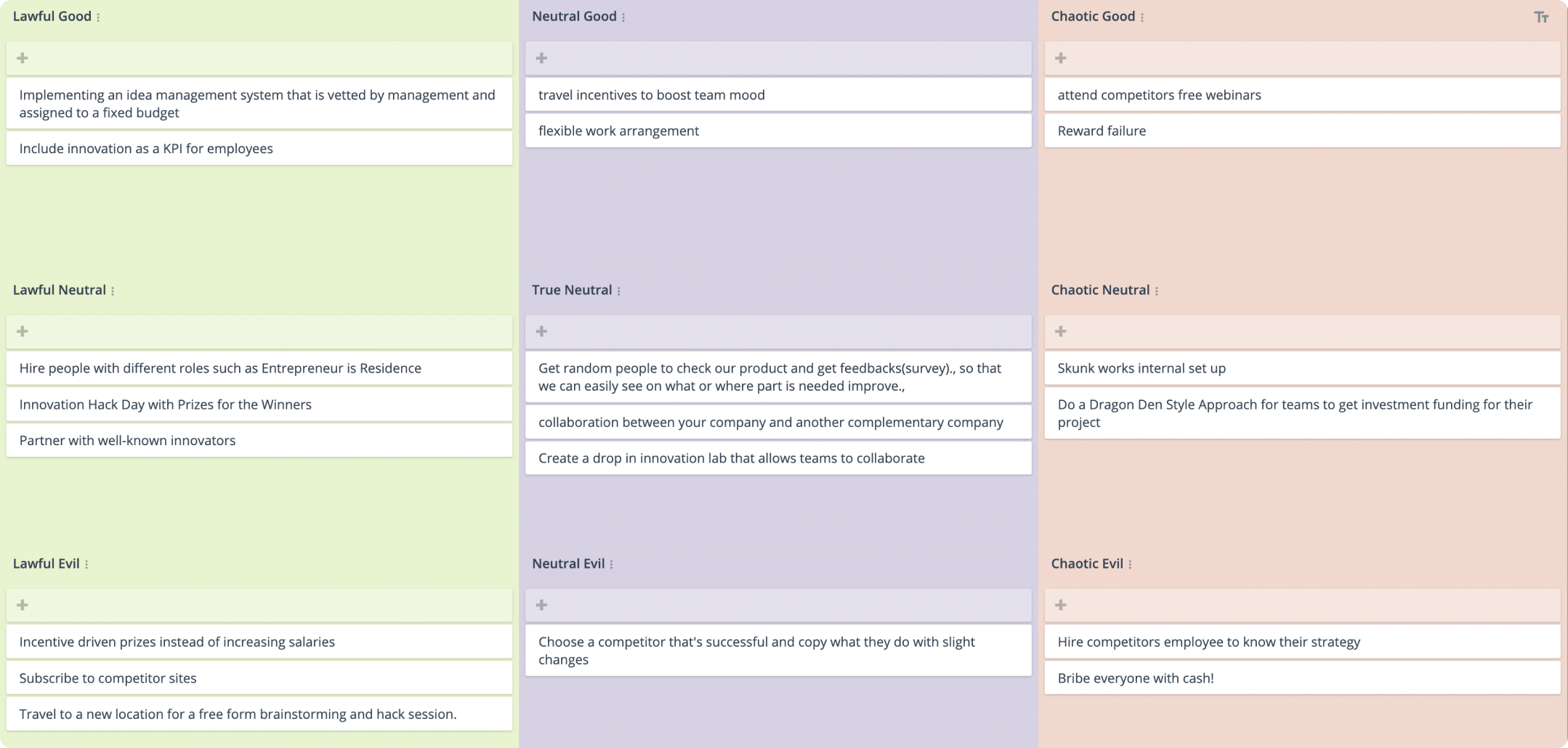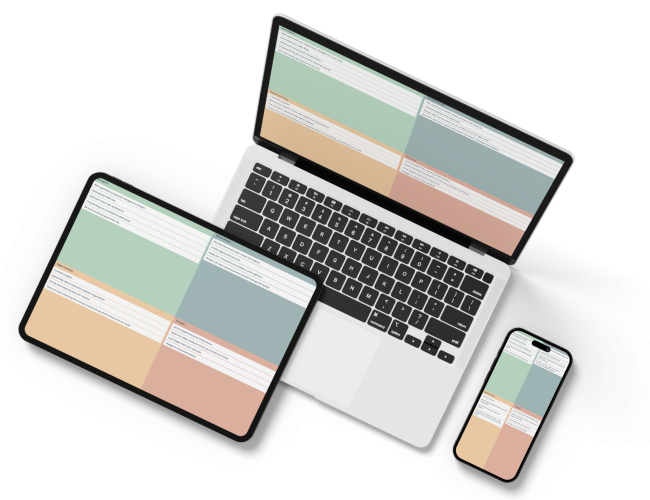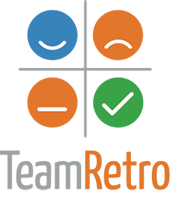
The Character Alignment Chart
This icebreaker activity lets you create different actions for any given situation and classify them as lawful, chaotic, good, evil or somewhere in between.
This is an imaginative way to encourage people to think about their values, how they approach decision-making, and the roles they play when working together.
This is a fun way to explore how people’s values play out in different situations.
Why do Character Alignment Chart?
This activity encourages self-reflection by revealing how each person may respond to a situation. The benefits of this include:
- It encourages creativity and solving problems from a different perspective.
- It promotes team building by understanding how different people respond to the same situation.
- People can explain their decision-making process in a non-threatening way.
Who Should Use One?
This activity is well suited for group facilitators, trainers, team leaders, or people leading groups to solve common issues that have multiple solutions.
Its game-based theme works well with retreats, creative problem-solving, and other collaborative settings.
Tips for the Character Alignment Chart
- <span data-metadata=""><span data-buffer="">Have a scenario ready to go, such as onboarding a new vendor or having to speed up production.
- <span data-metadata=""><span data-buffer="">Use technology and online collaboration tools to allow people to add their ideas in real time.
- <span data-metadata=""><span data-buffer="">There is room for all roles, including Evil, Unlawful and Chaos. Tell people to reserve judgment as the reasons for this behaviour might reveal a different, yet important perspective.
- <span data-metadata=""><span data-buffer="">Having all actions in a single category may have implications. Have the team discuss what it could mean for the group.<span data-metadata="">
Character Alignment Chart Template
Lawful Good
Upholds the law and is driven by duty and justice. Follows a moral code and respects authority.
Lawful Neutral
Seeks to maintain the law, but is not bound by good or evil. Is motivated by duty or tradition.
Lawful Evil
Uses the law to gain power or control. Is motivated by selfish desires.
Neutral Good
Seeks to do good, but is not bound by rules or laws. Is driven by empathy and compassion to help others.
Neutral Good
Remains balanced between following the law and their beliefs. Seeks to maintain balance and self-interest.
Neutral Good
Primarily motivated by their own self interests, rather than the law. May use others to further personal goals.
Chaotic Good
Prioritizes doing good over following the law or social norms. Is driven by freedom and individuality.
Chaotic Neutral
Prioritizes freedom and individuality over law or moral codes. Is unpredictable and difficult to control.
Chaotic Evil
Prioritizes own desires and goals above all else. Enjoys causing harm and destruction, and is difficult to control.
How to Run a Character Alignment Activity.
Firstly, create a few scenarios that you can pose to the group. For example:
- You are the head of a new innovation hub for the company and have been charged with coming up with new ideas to improve the product and service offerings of the team. What kind of actions would you take?
- You are running a community consultation workshop to get policy feedback on greening the neighbourhood, targeting the younger generation. What kind of actions would you take?
You can make the scenario as detailed or as simple as you like. Explain each of the different character types above to the group.

Brainstorm
Brainstorm actions for the scenario

Categorise
Sort actions into each category

Share
Explain your action and reasons
Each person brainstorms a range of actions they could do to address the scenario.
For example, in creating a new product under a new innovation hub, they could –
- Create a Skunk Works-style operation for ad hoc and random collaboration.
- Design an innovation hub that has mentors and a support structure.
- Create an internal competition or run a hackathon with winners and losers.
Each action can then be sorted into the relevant category on the character alignment chart. People can discuss and deliberate as needed.
For example
- Create a Skunk Works style operations for ad hoc and random collaboration. Chaotic neutral in nature. Skunk work teams have the freedom and individuality to pursue their own innovation goals.
- Design an Innovation hub that has mentors and support structure. Lawful good in nature given it has structure, rules, infrastructure and a support network.
- Create an internal competition or run Hackathon with winners and losers. Lawful evil as each team pursues their own goals and desires to win, but within a set of competition codes.
Have people discuss the rationale behind the decisions they made when it came to categorising the actions.
Remember, there is no “right” answer.
This is a chance to get a sense of how people feel about each idea.
It also helps people understand the implications and potential benefits for each action.

Save Effort, Time and Money with GroupMap
GroupMap offers more than just an online digital whiteboard—it’s innovative platform is designed to enhance the quality of your team’s decisions. With features that prevent bias and make facilitation seamless, GroupMap ensures no single voice dominates and ensures productive, inclusive conversations.
Its intuitive interface is easy for anyone to use, and its scalable design supports small teams and large groups whether they are face to face or around the globe. Customisable templates and workflows keep discussions focused on objectives, helping you drive actionable outcomes each and every time.
Create your first map and invite people in to start sharing their thoughts NOW.
Experience the power of GroupMap with our FREE 14 day trial.
Your free trial gives you access to all of our features, no credit card required.
